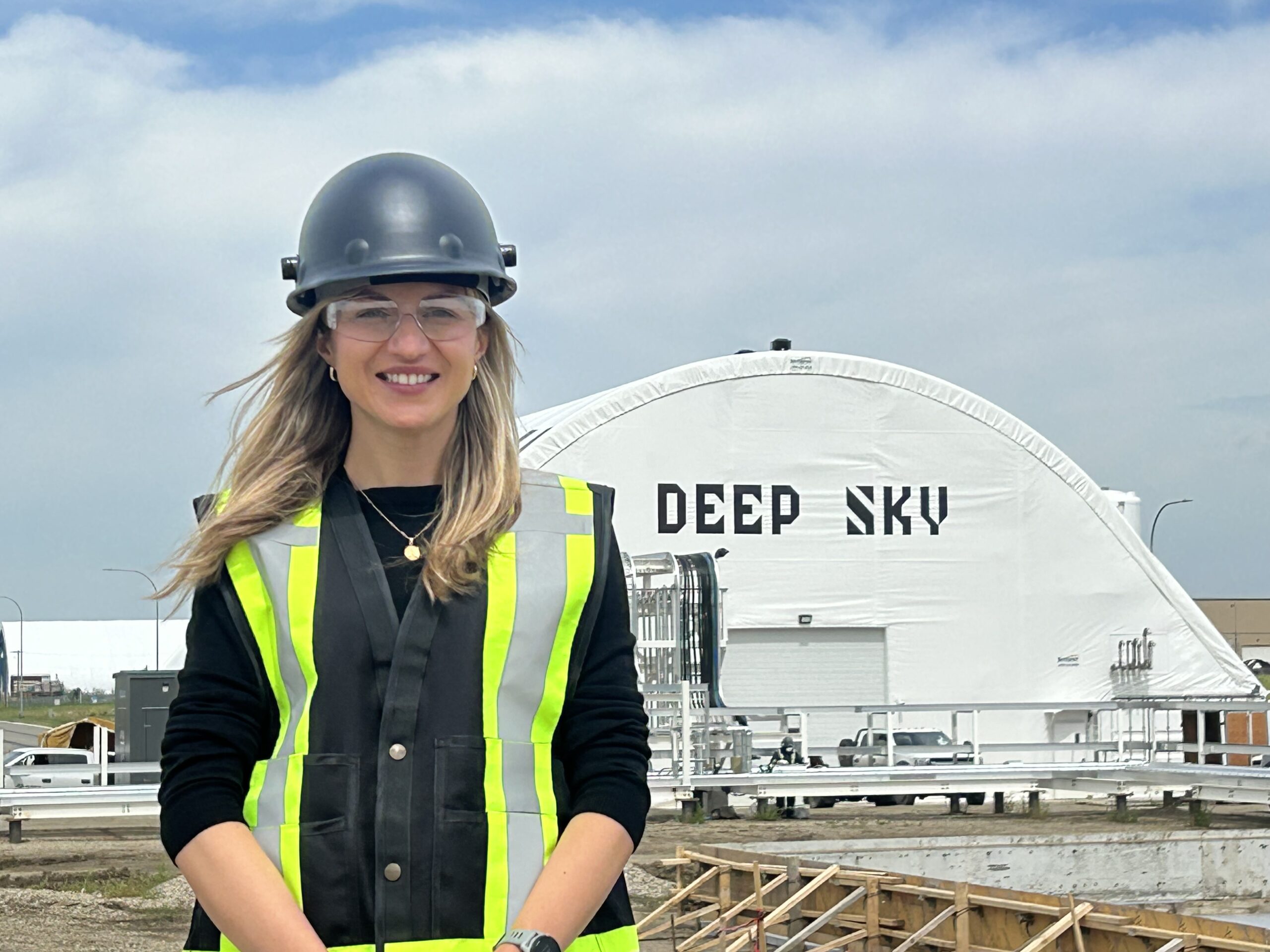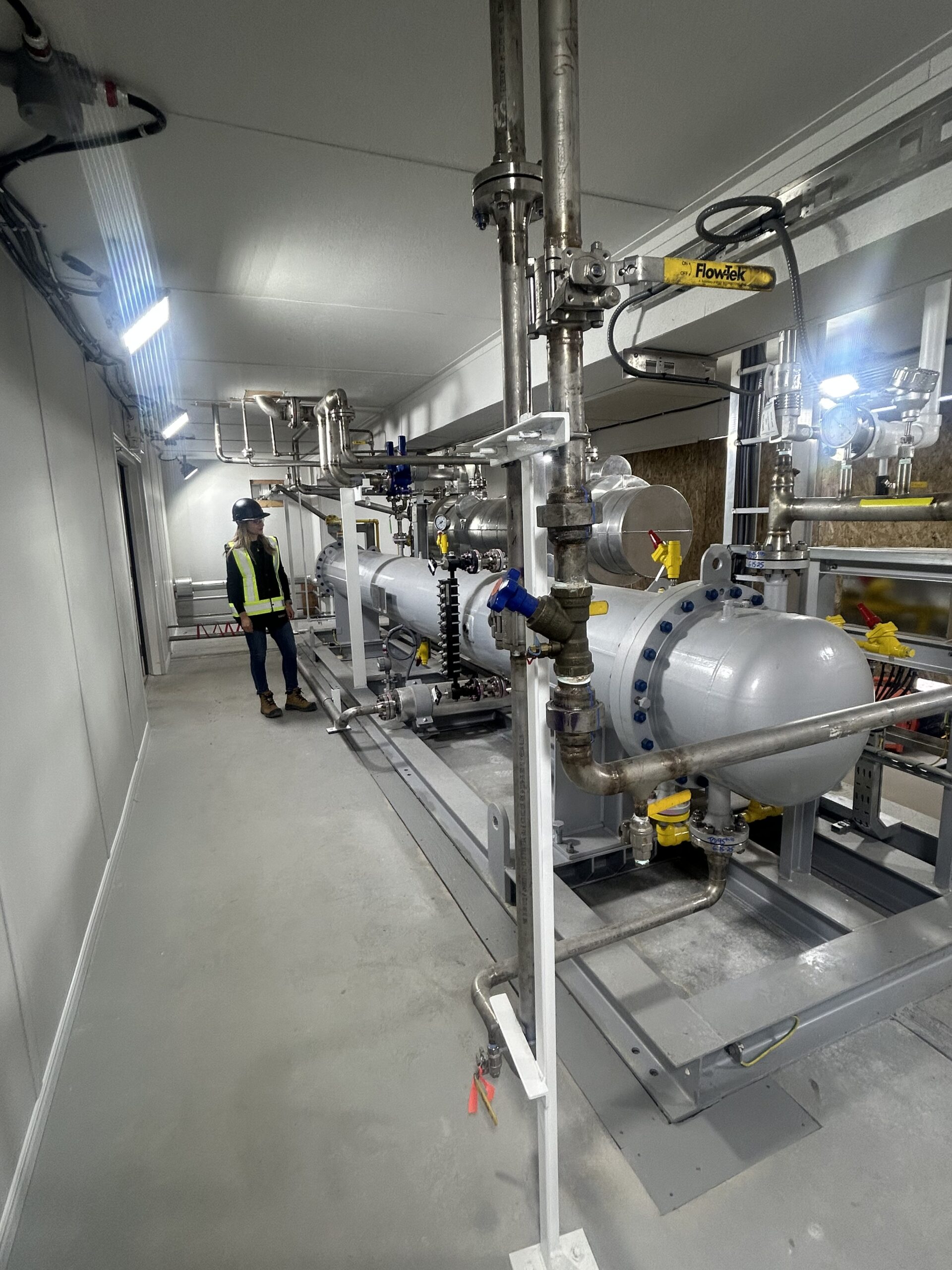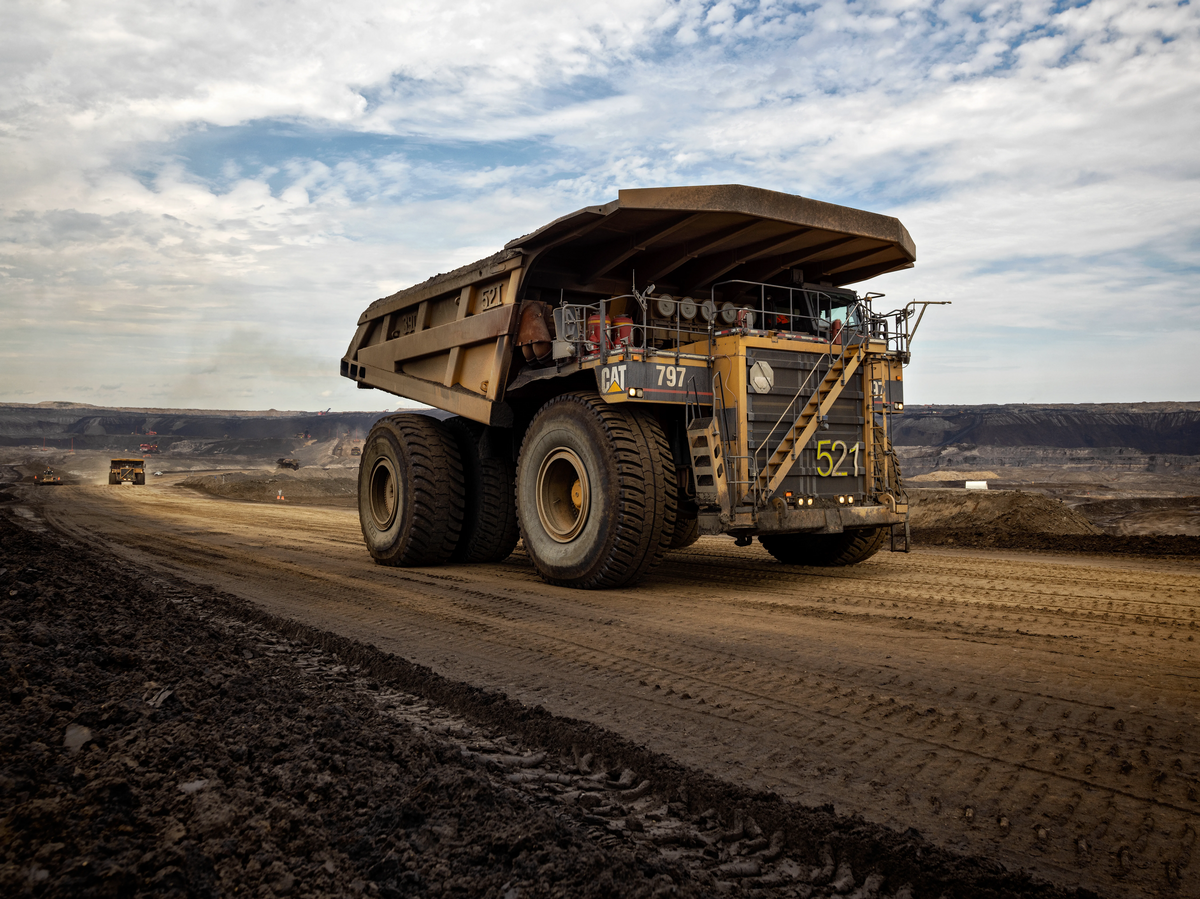Advancing direct air capture: Deep Sky to host vendors from around the world to test technologies at its Innisfail facility
September 4, 2025

Central Alberta’s endless fields of canola, wheat and oats provide an unlikely backdrop for the world’s first direct air capture (DAC) innovation and commercialization centre.
But Alex Petre, CEO of Montreal-based Deep Sky, sees Innisfail – a rural community about 120 kilometres north of Calgary – as the perfect location for the company’s landmark Alpha project, largely due to what’s underneath central Alberta’s uninterrupted Prairie and how it is regulated.
“Canada is blessed with amazing geology to store carbon dioxide (CO2) as well as an abundance of renewable energy. Our business needs both,” says Petre, whose company has 33 employees located in Montreal, Calgary and Toronto. “The province has developed subsurface storage regulations, which has created underground hubs for us to store CO2 captured here at Alpha. We require renewable energy because our product is a carbon offset.”
Powering the carbon capture process with renewable energy, helps meet validation requirements for those offset credits while also helping attract potential buyers. Deep Sky has already sold all the offsets produced by the facility for the next decade.
The $50-million centre will serve as a proving ground for DAC technologies developed in the United Kingdom, the Netherlands, Germany, Canada and the United States.
“We spoke to more than 100 vendors across the world about different technologies,” says Petre. “We selected 10 to come to Alpha and will test their technologies to find out which ones work best and take them to commercial scale.”
DAC technologies use powerful fans to suck in ambient air and pair it with a sorbent, which acts like a sponge by soaking up the carbon dioxide molecules. “DAC technologies use either a solid or a liquid sorbent to trap the CO2 molecules,” says Petre. “Once the sorbent is saturated with CO2, a desorption process, which uses temperature, pressure or electrodialysis depending on the technology, separates the CO2 from the sorbent. That CO2 is sent by pipeline to our Balance Of Plant (BOP), which processes it into liquid CO2. It is then transported by truck to a carbon storage hub, where it is stored safely underground.”
Deep Sky Alpha will test eight solid sorbent and two liquid sorbent technologies on its five-acre facility in an industrial park being developed as a clean technology hub by the town of 7,900 residents.
Emissions Reduction Alberta provided $5 million in funding towards Deep Sky Alpha from its Technology Innovation Emissions Reduction Fund. Pathways Alliance member companies provide support to that fund through the province’s carbon pricing and emissions trading system.
In addition to the funding, Petre also sees expertise from the energy industry helping Deep Sky establish itself.
“One of the reasons we have a great understanding of Canada’s geology is conventional energy companies have demonstrated that over the past few decades in extracting oil and gas resources,” says Petre, who started her career as an energy consultant. “We’ve used contractors to build Alpha that are used to working in conventional energy and have that expertise because much of our infrastructure is similar. We have pipe racks, and our BOP, which turns the streams from the different carbon capture technologies into liquid CO2, has similar equipment as a traditional oil and gas plant. But it’s assembled in a different way. What we are doing is the final logical step in the carbon cycle.”
The centre will have the capacity to capture 3,000 tonnes of emissions each year. But the overall goal will be to commercialize the most promising technologies at larger facilities that could remove up to one million tonnes of CO2 annually, Petre says.

“Many of these have been tested in the laboratory or smaller pilots. We want to see what works in the Canadian climate, which isn’t the easiest environment in terms of operating conditions, especially during a Prairie winter,” Petre says.
Deep Sky eventually wants to build 100 large-scale facilities across Canada but sees them as complementing projects such as Pathways Alliance’s proposed carbon capture and storage network.
“Carbon capture and storage (CCS) projects that scrub CO2 from the exhaust of heavy industrial facilities are an important tool because those technologies are preventing more CO2 from going into the atmosphere,” she says.
“Direct air capture is addressing the growing inventory of CO2 which has been emitted for the past 200 years since the start of the Industrial Revolution. What we are trying to do is vacuum up the CO2 that’s already in the atmosphere.”
The International Energy Agency estimates 27 DAC plants currently operate around the world with the capacity to capture 10,000 tonnes annually.
“Our company is very mission driven because this technology is needed. Figuring out how do this at scale at an affordable price is an important part of the mission and Deep Sky Alpha is the start of proving that.”

